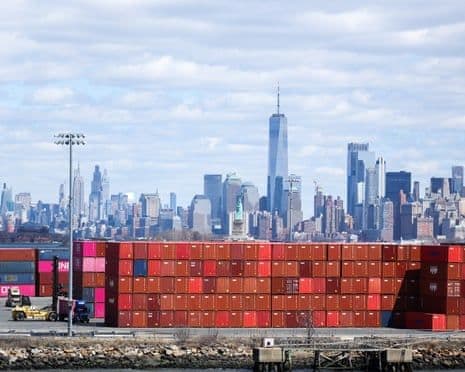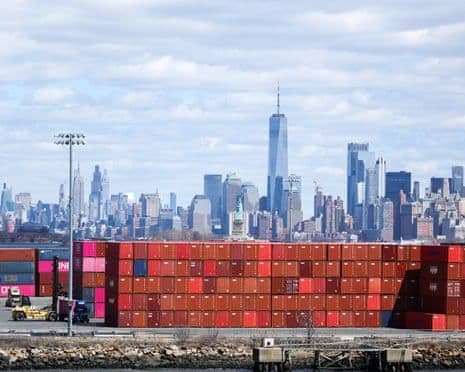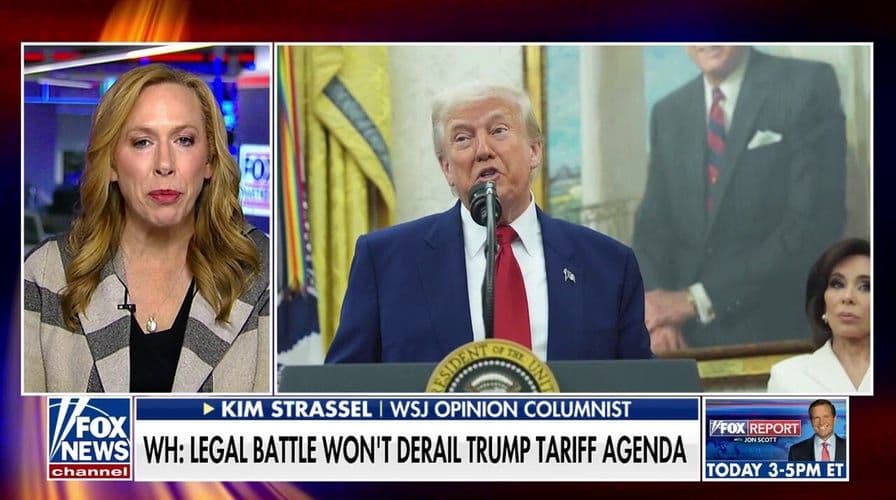The Gavel's Echo: Unraveling the Constitutional Seismic Shift in US Trade Policy
Explore the landmark tariff ruling's constitutional clash, redefining presidential economic power. We analyze its surprising aftermath and future US trade policy implications.
When the Gavel Falls: The Immediate Verdict and Its Paradox
A federal appeals court recently delivered a significant blow to former President trade policies, ruling that most of his sweeping tariffs are, in fact, illegal. In a decisive 7-4 vote, the rejected the administration's argument that these tariffs were permissible under an emergency economic powers act, declaring them "invalid as contrary to law." The judgment specifically targeted Trump’s "reciprocal" tariffs, which imposed a baseline 10% duty on goods from nearly every nation, alongside additional tariffs on key trading partners like , , and , previously justified by the administration as necessary to combat drug importation. The court emphasized that Congress must explicitly delegate tariff authority, asserting that the challenged tariffs were "unbounded in scope, amount and duration" and exceeded the express limitations of the law. This ruling, while a major legal defeat, presents an immediate paradox: the tariffs, despite being deemed unlawful, will remain in effect until October 14, allowing the administration time to appeal to the . Trump himself immediately took to social media, declaring "ALL TARIFFS ARE STILL IN EFFECT!" and accusing the court of political bias, a sentiment echoed by White House officials who vowed an "ultimate victory" and hinted at a "Plan B" to maintain the duties.

Executive Reach vs. Congressional Clout: A Power Redrawing
This appellate court decision lays bare a fundamental constitutional clash: the extent of presidential power versus the established authority of Congress over trade policy. The Trump administration had invoked the , citing various national emergencies like trade deficits and fentanyl trafficking, to justify its unilateral tariff imposition. However, the court unequivocally stated that IEEPA was not intended to grant the president "unlimited authority to impose tariffs," noting its lack of explicit mention of tariffs or adequate procedural safeguards. This ruling reaffirms that the power to set levies is a "core Congressional power," requiring explicit legislative delegation. The legal challenges, spearheaded by small businesses and a coalition of states, underscore the real-world economic impact of these executive actions. This impending battle at the Supreme Court is particularly salient given the court's recent skepticism towards presidential overreach, as evidenced by its application of the "major questions doctrine" to curtail executive actions during the presidency on issues ranging from climate change to student loan debt. The nine justices will now weigh whether Trump’s expansive tariff program constitutes another instance of executive overreach or if it possesses sufficient legal grounding, potentially reshaping the balance of power for generations to come.

Beyond the Balcony: The Enduring Economic & Political Ripples
The implications of this legal saga extend far beyond the immediate courtroom drama, casting long shadows over global trade and domestic politics. Trump's tariffs have already sown significant economic and political uncertainty worldwide, contributing to fears of rising inflation and complicating international relations. While the specific tariffs challenged in this ruling are in limbo, it's crucial to note that other duties, such as those on steel and aluminum, imposed under different presidential authorities, remain untouched. The administration’s frantic warnings—that an immediate invalidation of tariffs could trigger a "1929-style financial collapse" and a "dangerous diplomatic embarrassment"—highlight the perceived stakes and the intricate web of economic commitments tied to these policies. This ruling also throws into question the efficacy and stability of trade deals struck by nations seeking reduced tariff rates. As the case likely heads to the Supreme Court, the outcome will not just decide the fate of specific tariffs; it will set a critical precedent for how future presidents can wield economic power, unequivocally defining the boundaries of executive authority in trade. The ongoing political defiance from the Trump camp, paired with the administration's strategic planning to keep the tariffs active, signals a prolonged and high-stakes struggle that will undoubtedly continue to generate significant economic and political ripples.
Related Articles

The Imperial Presidency vs. The Gavel: Unraveling Trump's Tariff Tangle

The Imperial Presidency vs. The Gavel: Unraveling Trump's Tariff Tangle

The Iron Curtain of Commerce: How Courts Are Redefining Trump's Tariff Legacy

The Iron Curtain of Commerce: How Courts Are Redefining Trump's Tariff Legacy

The Constitutional Tightrope: Courts Challenge Presidential Trade Emergency Powers

The Constitutional Tightrope: Courts Challenge Presidential Trade Emergency Powers

The Unfolding Trade Chessboard: Trump's Tariffs and the Global Response
